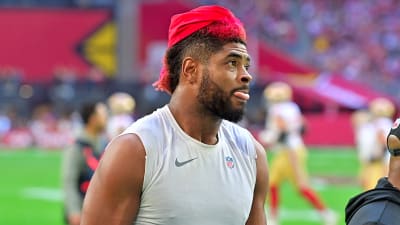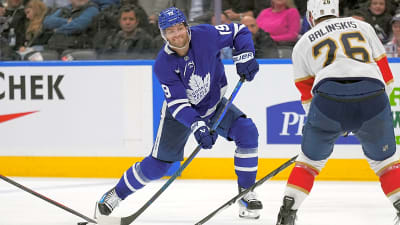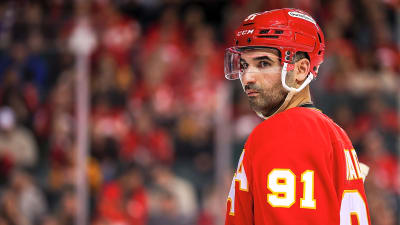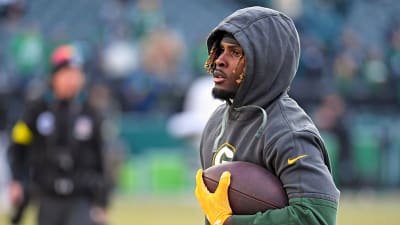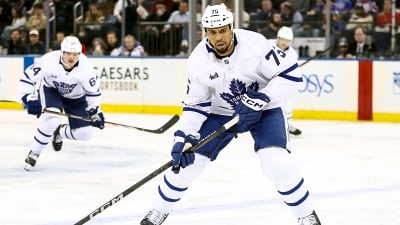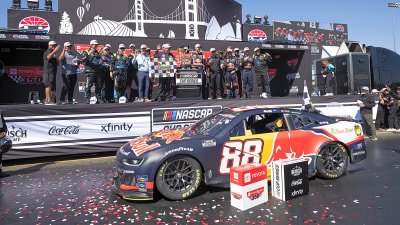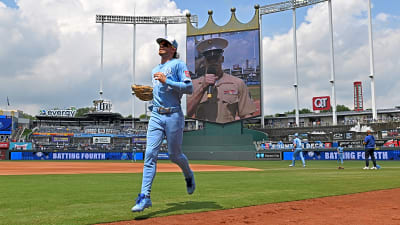- Home
- Quizzes
- My Quiz Activity
- Newsletters
- MY FAVORITES
- Add Sports/Teams
- SPORTS
-
NFL
- NFL Home
- Arizona Cardinals
- Atlanta Falcons
- Baltimore Ravens
- Buffalo Bills
- Carolina Panthers
- Chicago Bears
- Cincinnati Bengals
- Cleveland Browns
- Dallas Cowboys
- Denver Broncos
- Detroit Lions
- Green Bay Packers
- Houston Texans
- Indianapolis Colts
- Jacksonville Jaguars
- Kansas City Chiefs
- Las Vegas Raiders
- Los Angeles Chargers
- Los Angeles Rams
- Miami Dolphins
- Minnesota Vikings
- New England Patriots
- New Orleans Saints
- New York Jets
- New York Giants
- Philadelphia Eagles
- Pittsburgh Steelers
- San Francisco 49ers
- Seattle Seahawks
- Tampa Bay Buccaneers
- Tennessee Titans
- Washington Commanders
-
MLB
- MLB Home
- Athletics
- Arizona Diamondbacks
- Atlanta Braves
- Baltimore Orioles
- Boston Red Sox
- Chicago White Sox
- Chicago Cubs
- Cincinnati Reds
- Cleveland Guardians
- Colorado Rockies
- Detroit Tigers
- Houston Astros
- Kansas City Royals
- Los Angeles Angels
- Los Angeles Dodgers
- Miami Marlins
- Milwaukee Brewers
- Minnesota Twins
- New York Yankees
- New York Mets
- Philadelphia Phillies
- Pittsburgh Pirates
- San Diego Padres
- San Francisco Giants
- Seattle Mariners
- St. Louis Cardinals
- Tampa Bay Rays
- Texas Rangers
- Toronto Blue Jays
- Washington Nationals
-
NBA
- NBA Home
- Atlanta Hawks
- Boston Celtics
- Brooklyn Nets
- Charlotte Hornets
- Chicago Bulls
- Cleveland Cavaliers
- Dallas Mavericks
- Denver Nuggets
- Detroit Pistons
- Golden State Warriors
- Houston Rockets
- Indiana Pacers
- Los Angeles Clippers
- Los Angeles Lakers
- Memphis Grizzlies
- Miami Heat
- Milwaukee Bucks
- Minnesota Timberwolves
- New Orleans Pelicans
- New York Knicks
- Oklahoma City Thunder
- Orlando Magic
- Philadelphia 76ers
- Phoenix Suns
- Portland Trail Blazers
- Sacramento Kings
- San Antonio Spurs
- Toronto Raptors
- Utah Jazz
- Washington Wizards
-
NHL
- NHL Home
- Anaheim Ducks
- Boston Bruins
- Buffalo Sabres
- Calgary Flames
- Carolina Hurricanes
- Chicago Blackhawks
- Colorado Avalanche
- Columbus Blue Jackets
- Dallas Stars
- Detroit Red Wings
- Edmonton Oilers
- Florida Panthers
- Los Angeles Kings
- Minnesota Wild
- Montreal Canadiens
- Nashville Predators
- New Jersey Devils
- New York Islanders
- New York Rangers
- Ottawa Senators
- Philadelphia Flyers
- Pittsburgh Penguins
- San Jose Sharks
- Seattle Kraken
- St. Louis Blues
- Tampa Bay Lightning
- Toronto Maple Leafs
- Utah Mammoth
- Vancouver Canucks
- Vegas Golden Knights
- Washington Capitals
- Winnipeg Jets
- NCAAF
- NCAAM
- Olympics
- Boxing
- Entertainment
- Lifestyle
- Golf
- MMA
- Soccer
- Tennis
- Wrestling
- Sports Betting
- More Sports
- RESOURCES
- My Account
- YB on Facebook
- YB on Twitter
- YB on Flipboard
- Contact Us
- Privacy Policy
- Terms of Service
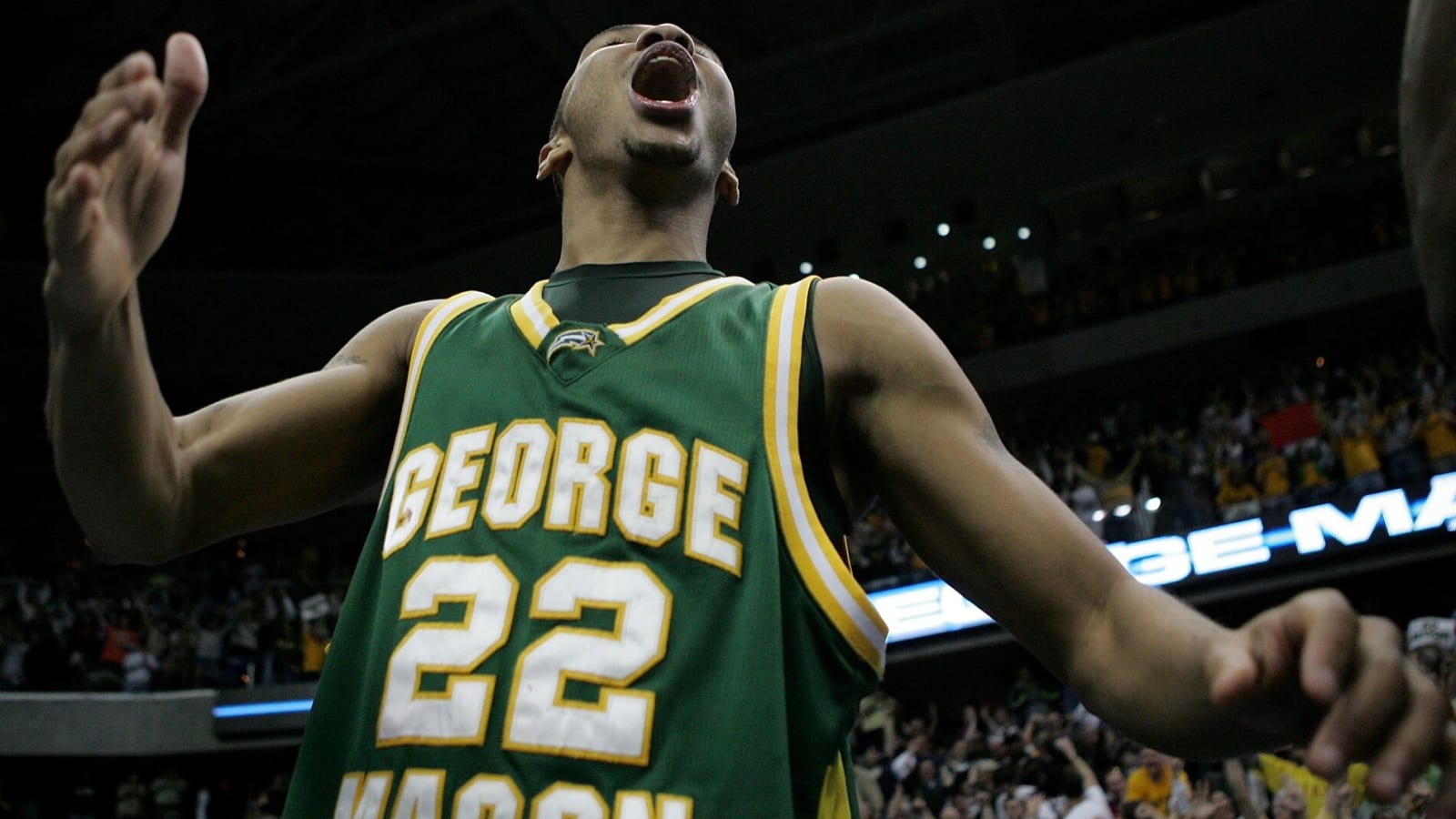
The 25 most memorable moments of the NCAA tournament in the 21st century
There have been so many great moments over the last 25 years of NCAA tournaments that it is so hard to trim the list down to just 25. There have been so many great games, dozens of monumental shots, and a ridiculous amount of happenings around the games to choose from. We've tried to find the most meaningful and notable of these moments to honor the 25 seasons of the 2000s.
Not all moments are incredible. Some are among the most challenging situations that college basketball has ever seen, that have their roots in real-world situations. Some are personal tragedies that forced players and teams to overcome. And for every triumphant play or team, there is an opponent that forever suffers the loss. The beauty of the NCAA tournament is the suddenness of triumph and tragedy, of cheers and tears, taking place at the exact same time. Every tournament, only one team gets to raise the championship trophy, but there are so many memories that make up every one of these tournaments.
So let's check out the 25 most memorable tournament moments of the 2000s.
UMBC upsets Virginia
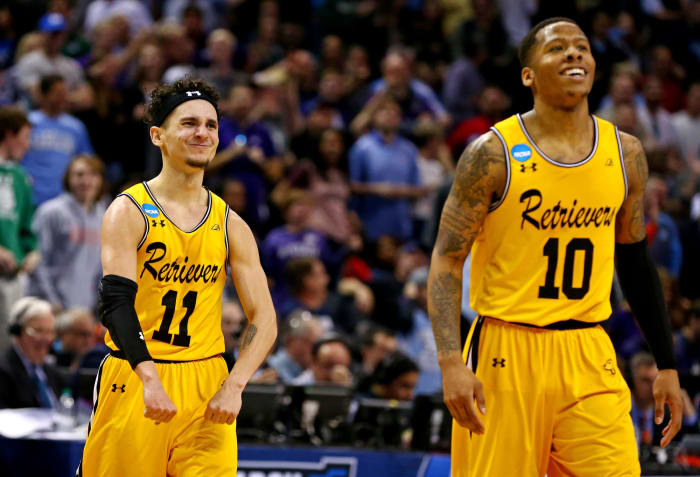
No. 16 seeds were 0-135 against No. 1 seeds since seeding began in 1985. While there were scares along the way, every beginning to the NCAA tournament came with a reminder that it has never happened ... but maybe this is the year?
Well, 2018 was the year.
Virginia entered the 2018 NCAA tournament as the top overall seed by running through the ACC regular season and conference tournament. Their patented Packline Defense and patient offense frustrated opponents who were forced to work hard every second they shared a floor with Tony Bennett's Cavaliers. Meanwhile UMBC was just some school with an acronym for a name that not many knew what it meant (University of Maryland, Baltimore County). Virginia was favored by 20 1/2 points ... and it would have been a larger number had Virginia employed a faster paced offense.
The two teams slogged through the first half, tied at 21-21. The halftime show is filled with reminders that a No. 1 seed has never lost a game like this and this may be the day! The second half begins and what happened over the next 20 minutes was as shocking as it was sudden. The Retrievers were taking it to the Cavaliers. Virginia's suffocating defense couldn't stop UMBC from getting whatever they wanted. The Cavs offense looked tight as the weight of history was breathing down their collective necks. UMBC's lead went to five ... then ten ... then 15 ... then 19. At the end of it all, UMBC stunned the world with a 74-54 win over Virginia, ending one of sports biggest losing streaks.
This wasn't just some upset where someone squeaked out a win late -- UMBC dominated. The Retrievers scored 53 points in the second half; Virginia averaged just 53 ppg allowed during the season. Since then we've seen Fairleigh-Dickinson beat Purdue in 2023 for the second 16-over-1 upset, but the Retrievers opened the door for all the other little programs to crash the party.
Kris Jenkins' shot to win the national championship

A game for the ages ended with arguably the biggest shot in NCAA tournament history. In the 2016 national championship game, North Carolina and Villanova battled all night long for the title. Down three, Tar Heels guard Marcus Paige hit a ridiculous double pump three to tie the game, 74-74, with four seconds remaining. After a timeout, the Wildcats inbounded the ball to Ryan Arcidiacono who dribbled up the court and pitched it back to Jenkins for a walk-up three point shot. Jenkins shot went in as the buzzer sounded and confetti immediately exploded on the court, setting up one of the most chaotic scenes in tournament history. It was Villanova's second title (and first since 1985) and the first time a national championship was won on a shot at the buzzer.
Gordon Hayward's missed shot to win the national championship

While Kris Jenkins' shot may be the most memorable shot in NCAA tournament history, Butler's Gordon Hayward may have the most famous missed shot ever. Butler was a No. 5 seed but a bit of a surprise team in the 2010 Final Four. After stunning top seed Syracuse and Kansas State in the West Region, then Michigan State in the Final Four, the Bulldogs were set to face one of the bluest bloods -- Duke -- for the national championship.
It was a fun game. Duke trying to its fourth title while Butler was playing in their hometown of Indianapolis. The two teams traded punches all game with Duke eventually having a 60-59 lead. Butler called their last timeout, then Hayward missed a jumper and had to foul Duke's Brian Zoubek with 3.6 seconds remaining. Zoubek made the first free throw but intentionally missed the second. Hayward grabbed the rebound, dribbled to half court and shot a desperation three that hit the backboard and off the rim.
It is a shot that everyone who has held a basketball dreams of. One everyone tries in their backyard or any court you find. The half-court heave. Every half-court shot has a bit of drama attached to it -- does this shot have a chance -- but most don't have a national championship on the line. Even less are even close. Only one came that close. Only one still has us thinking, "what if that went in"?
The greatest miss in NCAA tournament history.
George Mason's run to the Final Four

Understand that it was a rare thing for a school to come from a true mid-major to make an NCAA tournament run and reach the Final Four. Since the tournament expanded in 1985, there really wasn't any mid-major non-powers that reached the Final Four. UNLV did come out of the Big West in the 1980s and early 1990s; UMass from the Atlantic 10 under John Calipari was elite; the WAC (Utah) was a good league before it split; the Metro, Great Midwest and Conference USA were basically the same conference in different forms with great hoops programs. By the way, all of those teams I mentioned were No. 1 seeds aside from No. 3 Utah.
So George Mason's run in 2006 captivated the imaginations of Cinderellas in mid-majors everywhere. It wasn't just that they were the first 11-seed to reach the Final Four since LSU in 1986, it was that they were a team from the Colonial Athletic Conference and they beat successful blue bloods to get there. The Patriots upset Michigan State in the first round, defending national champion North Carolina in the second round, and title favorite UConn in the Elite 8 ... which came in overtime.
Since the Patriots' win, we have seen Butler (Horizon), VCU (Colonial), Wichita State (Missouri Valley), Loyola-Chicago (Missouri Valley) and Florida Atlantic (Conference USA) reach the Final Four as a mid-major seeded 8th or worse.
Adam Morrison breaks down after loss

Adam Morrison spent his entire junior season going head-to-head with Duke's J.J. Redick for national player of the year honors -- and he would win the Oscar Robertson award and led the nation in scoring. He was at Gonzaga at the perfect time as the Zags were changing from a Cinderella school in March to an actual power player and true championship contender. They were a preseason top ten team and their regular season games drew a lot of eyeballs.
So their Sweet 16 showdown with UCLA, a talented outfit led by Darren Collison, Arron Afflalo, Jordan Farmar, Ryan Hollins and Luc Richard Mbah a Moute. The Zags built a 17-point lead and looked like a team that actually could make a run to their first Final Four, But the Bruins chipped away, and took the lead after an epic Gonzaga collapse in the closing seconds. With the backdrop of CBS' Gus Johnson's crackling enthusiasm on the telecast and chaotic nature of the final moments, the sight of Morrison sitting on the floor then laying face down crying is burned in our memories of the finality of the NCAA tournament. Some made fun of Morrison's emotions; many others applauded it. Either way, it was the rawness of a moment that is ingrained in sports and, especially, the NCAA tournament.
Sister Jean and Loyola-Chicago's run to the Final Four

Sister Jean Schmidt gained fame during the 2018 NCAA tournament. Sister Jean was the Loyola-Chicago's men's hoops team's chaplain since 1994 and was a central part of the Ramblers' 2018 NCAA tournament run. The Ramblers beat Miami and Tennessee during the first weekend, then knocked off Nevada and Kansas State to win the South Region. The 98-year-old was a star who got her own bobble-head and game interviews. In 2021, she was able to be one of the few fans to get into the tournament bubble and cheered her Ramblers to another Sweet 16 appearance. She was also at the 2022 tournament as Loyola-Chicago lost in the first round to Ohio State.
Jalen Suggs extends Gonzaga's perfect season

Gonzaga was the latest team to attempt to be the first team to go undefeated since the 1975-1976 Indiana Hoosiers. The Zags were 30-0 entering their Final Four matchup with UCLA, an 11th seed that had to play in the First Four round on their way to the national semifinal. Gonzaga had blown out all four of their opponents to get to this game, but the Bruins proved to be quite the challenge.
Down two, UCLA's Johnny Juzang missed a floater but got the rebound and hit the put-back to tie the game with 3.3 seconds left. Gonzaga quickly inbounded the ball to freshman Jalen Suggs, who dribbled to just past the halfcourt logo, heaved up a prayer that slammed against the backboard and went clean through the rim. The Bulldogs win on an incredible buzzer-beater in the bubble.
Gonzaga would finish short of their goal, however, getting rolled by Baylor in the title game two nights later.
Paul Jesperson's half-court heave

Gordon Hayward's missed. Jalen Suggs hit his in a bigger game. But Northern Iowa's Paul Jesperson hit the longest game-winning buzzer-beater in NCAA tournament history.
After Texas ties their first round game with Northern Iowa with 2.7 seconds left, Jesperson caught the inbounds pass about 40 feet down the court, took one dribble nearly parallel to the halfcourt line, threw up a shot that ... like Jalen Suggs ... pounded off the backboard and went straight in the basket. The Panthers walk off with the win, 75-72. The shot broke the record for longest buzzer-beater, held by Arkansas' U.S. Reed, who hit a half court shot to beat Louisville in 1981. Reed's shot was only worth two points but it did swing the outcome of the game, as the Razorbacks were down when he hit his shot.
North Carolina ends Coach K's career

It is no secret that North Carolina-Duke is college basketball's biggest rivalry and is in the discussion for the greatest rivalry in all of sports, so everyone was hyped to see these two face off in the NCAA tournament for the first time ever ... and it was in the Final Four.
Not only that, but it was the final weekend of Mike Krzyzewski's career -- no matter what happened. And it came just one month after the Tar Heels went into Duke and embarrassed the Blue Devils on Coach K's final game at Cameron Indoor Stadium. The storylines were everywhere and the tension in the Superdome was thick as two rivals who could not lose this game faced off with the ultimate rivalry trump card on the line.
The game met every expectation. Both teams played at a high level. Stars did star things. Both teams would make runs and they two would trade shots down the stretch. There were 18 lead changes, but the 19th couldn't happen due to missed free throws by Duke's Mark Williams. Down one, Williams missed two free throws, UNC's Caleb Love came down the floor and daggered a three-point shot (in Williams' face) to give the Heels a four-point lead. The Tar Heels would win the game, 81-77, ending Krzyzewski's brilliant career.
Kevin Ware breaks his leg

One of the most gruesome injuries in sports history was the moment Louisville's Kevin Ware broke his leg during the Cardinals' 2013 regional final game against Duke. At the 6:33 mark of the first half, Ware tried to block a shot and landed awkwardly, breaking his leg. Players on the floor and fans in the crowd were visibly shaken by the sight of Ware's broken bone sticking out of his skin. The game would eventually go on and Louisville would go on to win the game and the national championship the following week, dedicating their performance to Ware. He would appear in nine games the following year, but decided to redshirt in order to fully heal. He transferred to Georgia State to finish out his college career.
Mario Chalmers shot

In the 2008 national championship, Kansas' Mario Chalmers hit a three with 2.1 seconds left in regulation to send the game into overtime. The shot erased a nine-point deficit with 2:12 left. Kansas would go on to win the title in overtime, 75-68.
It is also what happened leading up to it that was a big story. Memphis was one of the worst free throw shooting teams in the nation (at 59.2% as a team, they ranked 326th of 328 schools). As the Tigers entered the tournament, head coach John Calipari (who has long ignored the importance of free throw shooting) shrugged it off. In an interview, he said, "We'll make the free throws we're supposed to make." Yet they all count, and in the most important of moments for a team, poor free throw shooting cost Calipari and his Memphis team a national championship. Ironically, five years earlier, Kansas went 12-of-30 from the line and lost the national championship game to Syracuse by three.
Up nine with 2:15 left, Memphis kept getting fouled by Kansas. The Jayhawks knew that their best pathway to a comeback was stopping the clock and watching the Tigers clang free throws. And it worked. Memphis missed 4 of 5 free throws and Kansas went on a 12-3 run to ti the game. The lone made free throw for Memphis in that stretch was by Derrick Rose with 10.8 left in regulation to give the Tigers a three-point lead. Instead of fouling up three, Memphis let Sherron Collins dribble up the floor, falling over as he passed the ball to Chalmers on the wing. Chalmers dribbled to the top of the three point arc and splashed a three with Rose right in front of him. It was Kansas' first title since 1988 and the first championship for Bill Self.
2020 NCAA tournament is canceled

March 2020 was the flashpoint of the coronavirus pandemic in America and sports were at the forefront of the seriousness of the public health issues that had arrived. After games in other sports were postponed and various conferences decided to end their own tournaments early, the NCAA decided to cancel its own tournament just days before it was set to begin. It was the first major sports event to be shut down as the NCAA decided to suspend all winter and spring sports for the rest of the school year. The effects of that decision are numerous, including the eventual addition of a "COVID year" to student athletes, which has allowed many players to have a fifth season of eligibility that has been a boost to champions since that season.
St. Peter's magical run

UMBC may have made history with their defeat of a No. 1 seed and George Mason may have crashed the ceiling with their Final Four run, but no Cinderella story over the past 25 years has been more improbable than the 2022 St. Peter's Peacocks.
For starters, they downed mighty Kentucky, a 2-seed, in the first round, 85-79, in overtime. The Peacocks became just the 10th No. 15 seed to beat a No. 2 in the first round. They would go on to beat Murray State, 70-60, to become just the third 15-seed to reach the Sweet 16. They would then stun No. 3 Purdue, led by 7-4 Zach Edey, 67-64, to become the first 15-seed to reach the Elite 8.
St. Peter's wasn't a special team up to that point. They began the season 3-6, finished second in the MAAC with a 16-11 regular season record, but won an upset-filled conference tournament to earn the league's automatic berth. They were led by "big man" KC Ndefo and the mustached Doug Edert, who became tournament stars over two weeks in March.
Zak Showalter's "discount double check"

Wisconsin's 2017 Sweet 16 showdown against Florida was one of the best atmospheres we've had over the last 25 years in the NCAA tournament. The backdrop is Madison Square Garden and the Badgers and Gators were going back and forth with the crowd celebrating every big play. One of the biggest was Zak Showalter's running-and-shooting-off-one-leg three that tied the game and send it to overtime. Timeout was called, and Showalter looked over at then-Green Bay Packers quarterback Aaron Rodgers and did his patented belt celebration, that had become known as the "discount double check" move from Rodgers' commercials. Rodgers, who had become a supporter of the Badgers hoops program, grinned. Wisconsin would go on to lose the game on Chris Chiozza's buzzer beater in overtime.
Furman's amazing comeback on Virginia goes viral

Virginia is one of the oddest teams of the NCAA tournament over the last decade or so. They are known for a lot of bad first round losses (this is their second time on the list for that) and one of the most continuously clutch runs in history with their 2019 national championship. What happened in the first round of the 2023 NCAA tournament was one of the biggest what-are-you-doing moments of the last 25 years.
The Cavaliers are up 67-65 with 12.3 seconds remaining in the game. Super-senior guard Kihei Clark ... who was a starter as a freshman for the 2019 title team ... picks up his dribble in the corner of his own backcourt. Clark then blindly heaves the ball down court, which is caught by Furman's Garrett Hein who passed it to JP Pegues, who hits a three with 2.2 seconds left.
The moment has since gone viral, as video of the broadcast made it online. When watching the game live, you could hear TruTV's Kevin Harlan's stunned screaming over the air while analysts Stan Van Gundy and Dan Bonner were silent. The video of the crew shows Harlan very animated while Bonner and Van Gundy are completely stunned. Harlan's call of "Did we just see what we think we just saw? Wow!" has even power with the new look behind the scenes.
Virginia-Purdue, 2019

In fairness to Virginia, I will discuss one of their better moments in this list. For as bad as some of their tournament losses have been in the 2000s, their championship run in 2019 is one of the most clutch and nail-bitingly epic paths I have ever seen. Virginia got over a mental hurdle by beating 16th seed Gardner-Webb in the first round before dispatching Oklahoma and Oregon in the next two rounds. Their regional final showdown with Purdue is one of great games of the NCAA tournament.
The game was back-and-forth throughout, but the show was Purdue's Carsen Edwards. He was everything for the Boilermakers, hitting 14 of 25 shots (the rest of the team shot just 30 times) for 42 points. Meanwhile, Virginia's Kyle Guy (25 points) and Ty Jerome (24) combined to match Edwards' lethal offense. There were clutch plays all over the court, but the best happened at the end of regulation.
Down three with 5.9 seconds left, Jerome hit the first of two free throws before intentionally missing the second. Mamadi Diakite smacks the rebound to the backcourt where freshman guard Kihei Clark (remember him?) tracked it down. He recovered the ball while running away from his own basket (he got it at the opposing three point arc) with 3 seconds left, he turned, dribbled and threw it up court to Diakite. How Diakite was able to catch and shoot that ball that quickly (and a millisecond before the clock expired) is one of the most unexplainable feats I have watched in sports. That's not me questioning if the play was legal or not -- it certainly was -- but physically how it did it happen? The shot went in and the game heads to overtime.
The Cavaliers would go on to win the game in overtime, 80-75, to reach the Final Four. There they would need more miracles to squeak by Auburn and Texas Tech to win the title.
Dunk City makes history

Florida Gulf Coast University started their basketball program in 2002-2003 and became a Division I program five years later. Five years after that came one of the most exciting Cinderella stories the tournament has seen.
Head coach Andy Enfield (who was hired in 2011) wanted his Eagles to fly. He wanted them to use their athleticism to out-run and out-work opponents ... and to hammer down a bunch of dunks. They reached their first NCAA tournament in 2013 after winning the Atlantic Sun championship. As a 15-seed, FGCU rocked No. 2 Georgetown with 21-2 run that featured the swagger and force that people weren't ready for. Sherwood Brown scored 24 points and Bernard Thompson added 23 in the 78-68 win. Georgetown committed 33 fouls and sent the Eagles to the line 44 times. But the play everyone was talking about was Brett Comer's alley-oop pass to Chase Fieler for a one-handed dunk. That was just one of several highlight dunks the Eagles pounded that day.
Two days later, the Eagles beat San Diego State by 10, with more dunks and celebrations. FGCU went on a 17-0 run in this game to open up a lead they wouldn't give up. The win made the Eagles the first No. 15 seed to reach the Sweet 16. There they would lose to in-state Florida, 62-50. Enfield would leave for the USC job after the loss.
Villanova's Crying Piccolo Girl

In the 2015 NCAA tournament, No. 8 seed NC State stunned the East's top seed Villanova in the second round. As the game ended, CBS' camera panned to Villanova's band and saw a young lady playing the piccolo with tears streaming down her face. The shot went viral and she was instantly known as the "Villanova Crying Piccolo Girl". She was a meme, she was a guest on talk shows and news stations. She was an overnight sensation.
The "Piccolo Girl's" name is Roxanne Chalifoux and a decade later is an optometrist in Baltimore. That 2015 loss to NC State was also her final basketball game as a band member as the senior would be off to the Pennsylvania College of Optometry at Salus University the following year.
Stephen Curry drops 40 on Gonzaga

Davidson's Stephen Curry entered the 2007-2008 with some buzz after his performance in a first round loss to Maryland in the 2007 NCAA tournament. He hit five threes while scoring 30 points in the defeat. In his sophomore season, his Wildcats returned to the Big Dance and made a run.
In the first round against Gonzaga, Curry dropped 40 points on the Zags, hitting 8 of 10 from three-point range, and winning 82-76. In the second round, Davidson came back from down 17 points to Georgetown to pull off a 74-70 win. Curry scored 25 of his 30 points in the second half. In the Sweet 16, he scored 33 points in a 17-point win over Wisconsin. He became the first player since Glenn Robinson in the early 1990s to score at least 30 points in each of his first four NCAA tournament games. That streak, and Davidson's season, ended when he scored "only" 25 points in a 59-57 loss to the eventual national champion, Kansas Jayhawks.
That would be the last time Curry would be in the NCAA tournament. He would return to Davidson for his junior season and become a big draw, but a loss to College of Charleston in the Southern Conference tournament semifinals ended their NCAA dreams. The Wildcats would play in the NIT, where they'd lose to Saint Mary's in the second round.
Ja Morant's triple double

Ja Morant's first round game of the 2019 NCAA tournament was historic. The Murray State guard scored 17 points, dished out 16 assists and brought down 11 rebounds in the upset over Marquette. Morant was just the 7th player to record a triple double in the NCAA tournament and the first to do it since Michigan State's Draymond Green in 2012 (he was also the first guard to do it since Marquette's Dwyane Wade in 2003). His 16 assists are second most in NCAA tournament history.
The Racers would beat Marquette, 82-63. They would be crushed by Florida State by 28 points in the second round. Morant led all scorers with 28 points.
2005's Elite 8

The 2005 regional final weekend might be the greatest Elite 8 slate of games we've ever watched.
In Syracuse, No. 6 Wisconsin gave No. 1 North Carolina everything they wanted in a 88-82 Tar Heels win. Sean May scored 29 points and grabbed 12 rebounds. The game was close late, but Carolina pulled away at the end.
In Albuquerque,West Virginia spent the first half of their game against Louisville draining threes and building a 20-point lead. But Rick Pitino's Cardinals would storm back, using his press defense to force turnovers and disrupt the Mountaineers offense. The Cardinals would win in overtime, 93-85. West Virginia's Kevin Pittsnogle scored 25 points (hitting six threes) while Louisville's Larry O'Bannon and Taquan Dean ... who hit 7 threes ... combined for 47 points.
In Austin, Michigan State and Kentucky were in a fist fight that was highlighted by the Wildcats' Patrick Sparks' three at the buzzer that hit every part of the rim before trickling in. The referees would spend a lot of time reviewing to see if Sparks' toe was behind the line (it barely was) and the game went to overtime. Eventually the Spartans would pull away in double overtime, 94-88.
In Chicago, the hometown Illinois Fighting Illini were down by 15 points with just over four minutes left in the game. Illinois, who were the No. 1 ranked team for much of the season, went on a 20-5 run to end regulation. In OT, the Illini kept their momentum to take a lead before settling for a 90-89 win.
The four games of this Elite 8 yielded five overtimes and the games were decided by 5.3 points.
Farokhmanesh's shot beats Kansas

Ali Farokhmanesh is the perfect example of how a guy not many sports fans had heard of can become instantly popular after a couple of NCAA tournament games. In 2010, Farokhmanesh was a senior for Northern Iowa when he hit two of the biggest shots in program history in back to back games. With the game tied in their first round game against UNLV, Northern Iowa beat the Rebels' press and found Farokhmanesh open for a three-pointer, which he knocked down with 4.9 seconds remaining. That tournament win was the first for the Panthers program in 20 years. The next game, against top-seeded Kansas, Farokhmanesh hit the three-pointer that made him an NCAA tournament legend.
Kansas had stormed back from a 12-point deficit to whittle the Panthers' lead down to one with :43 remaining in the game. Northern Iowa inbounded the ball and was met with a full court press. Nearly turning the ball over, the ball was advanced past half court and found its way into Farokhmanesh's hands at the three point arc with :38 left. The lone defender back, ran away from him, leaving Farokhmanesh wide open. Most coaches would want to run as much clock down as they could, but Ali had different ideas. He took a shot that was ill-advised in that moment, but it splashed in. CBS broadcasters Kevin Harlan and Dan Bonner went bonkers, with Bonner yelling, "you can't be serious with that shot!" Down four, Kansas came down the court but Tyrel Reed charged and turned the ball over and the game was all but over. Farokhmanesh's shot may be the ultimate "NO ... YES" shot in tournament history.
Ron Hunter falls off his stool

Georgia State head coach Ron Hunter had to coach his first game in the 2015 NCAA tournament with a cast on his leg and sitting on a stool on wheels after rupturing his Achilles celebrating the Panthers' Sun Belt conference tournament championship. The No. 14 Panthers matched up against 3rd-seeded Baylor in Jacksonville and gave us a moment we will never forget.
Down 56-44, Georgia State went on a 13-0 run to end the game, with Ron's son R.J. scoring 12 of those points. The biggest shot was Hunter's three from several feet behind the arc at the top of the key to give the Panthers the lead with under three seconds left in the game. When R.J.'s shot went in, Ron fell off his stool with his hands in the air to celebrate. Baylor immediately called a timeout and players and coaches ran over to help Hunter up.
It was a great moment for basketball, but it was also a fantastic moment for family. After the game, Ron said he was going to celebrate with his R.J. as father-son, and not as coach and player.
Jimmer Time!

Prior to the 2011 NCAA tournament, BYU's Jimmer Fredette had some experience and success during March Madness. He scored 37 points in a first round win over Florida in 2010, but his run the following season is what most people remember fondly. The Cougars were a No. 3 seed and handled Wofford in the first round behind Fredette's 32 points. Two nights later he scored 34 points in spectacular fashion, nailing 7 three pointers, as BYU trounced Gonzaga by 22 points. In the Sweet 16, his Cougars faced Florida once again, but the Gators were ready for him. While Jimmer scored 32 points, he missed 12 of his 15 threes. BYU would be eliminated, 83-74.
Jimmer Mania was a real thing that season. Fredette was the national player of the year as BYU's games became must-see television.
BYU's First Four comeback

There have been some great comebacks over the last 25 years, but none were like what we saw in Dayton. Normally a First Four game between No. 14 seeds BYU and Iona doesn't become an NCAA tournament classic, but the Cougars win over the Gaels made history.
Iona played a run and gun style offense, and they were smoking hot in the first half against BYU -- they took a 49-24 lead with 6:12 left in the first half. They made 24 of their first 35 shots! The Gaels looked like the most dangerous 14-seed ever, but all that would change rather quickly. BYU chipped away at the lead and had it down to 55-40 at the half. Iona's white hot start cooled off immensely, as they missed 28 of their final 35 shots. BYU figured out how to attack the Gaels zone and started to get easy baskets. Instead of forcing up the first good look available against Iona's press, BYU would make an extra pass or two to find great looks. The Cougars closed the game on a 34-10 run and won the game, 78-72. The 25-point comeback is still the largest in NCAA tournament history, eclipsing Duke's 22-point comeback over Maryland in the 2001 Final Four.
Shiloh Carder has over 20 years experience in covering sports for various websites and has been with Yardbarker since 2009. A Charlotte, NC native who now lives outside Cincinnati, he has covered college basketball, college football, NFL and NBA. You can find him on Twitter/X at @SportzAssassin
More must-reads:
- Three times an American nearly ended 25-year Wimbledon drought
- Ben Shelton makes frightening Jannik Sinner claim after Wimbledon loss
- The 'NBA Rookies of the Year' quiz
Breaking News
Trending News
Customize Your Newsletter
 +
+
Get the latest news and rumors, customized to your favorite sports and teams. Emailed daily. Always free!
PRIVACY POLICY EDITORIAL POLICY CONTACT US
ABOUT YARDBARKER TERMS OF SERVICE
Use of this website (including any and all parts and
components) constitutes your acceptance of these
Terms of Service and Privacy Policy.
This site is for entertainment purposes only.
There is no gambling offered on this site.
Gambling Problem? Call 1-800-Gambler.
